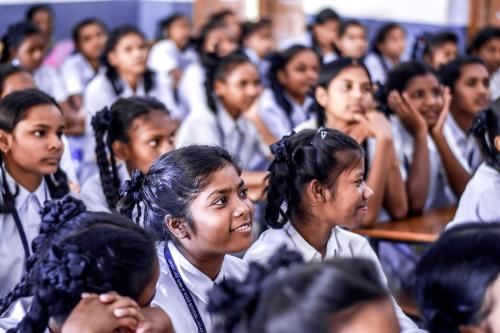Introduction
Young people in the Middle East (15-29 years old) constitute about one-third of the region’s population, and growth rates for this age group are the second highest after sub-Saharan Africa. Today, the entire Middle East region is experiencing a demographic boom along with an oil boom. The concurrence of sound economic growth and a large youthful working population create the social and political impetus for fundamental institutional change which can enable the region to capitalize on these twin dividends for lasting economic development. Thus, tapping the full potential of young people is one of the most critical economic development challenges facing the Middle East in the twenty-first century.
In recent years, a number of policy frameworks have emerged to address youth transitions from education to employment and to family formation. These frameworks recognize that the critical transitions experienced by youth within a relatively short timeframe in turn have lifelong impacts on them, their families, and society at large.
Building on these existing frameworks, this paper focuses on the role of markets and institutions in mediating youth transitions, namely education systems, labor and housing credit markets, and social norms governing marriage and family formation. Difficult youth transitions and social exclusion are interpreted as a consequence of failures in these market and non-market institutions. Economic and social policy should be designed to improve the institutional environment and create incentives that will allow youth to better manage their transitions to adulthood.


